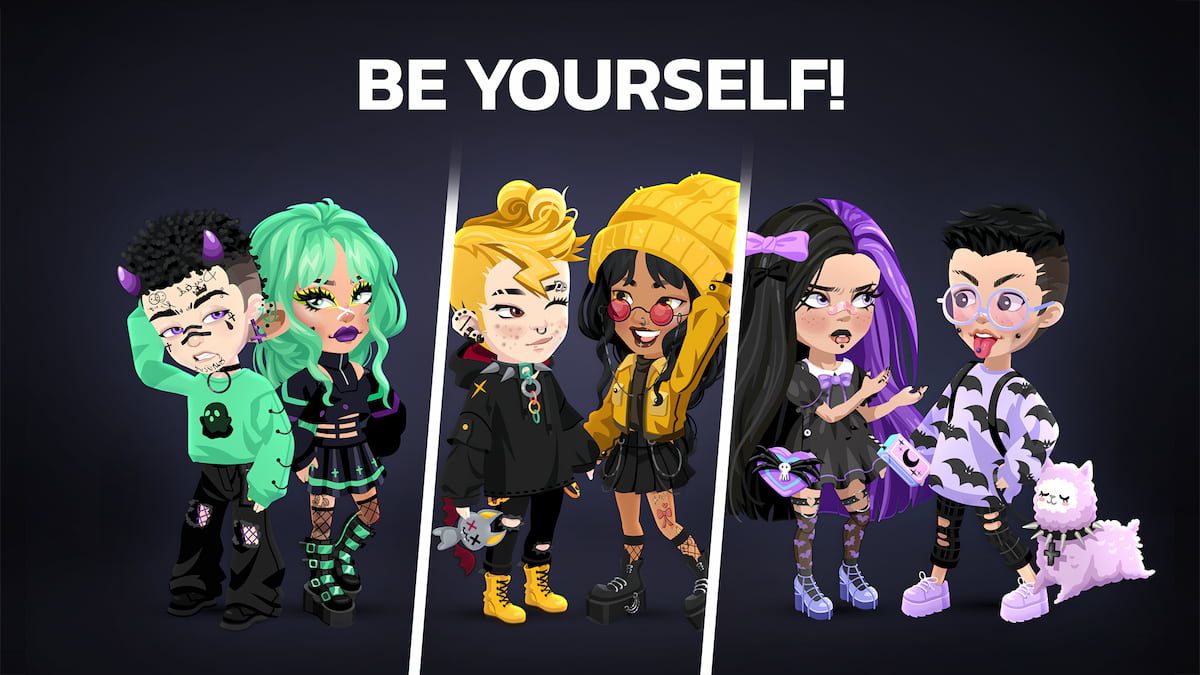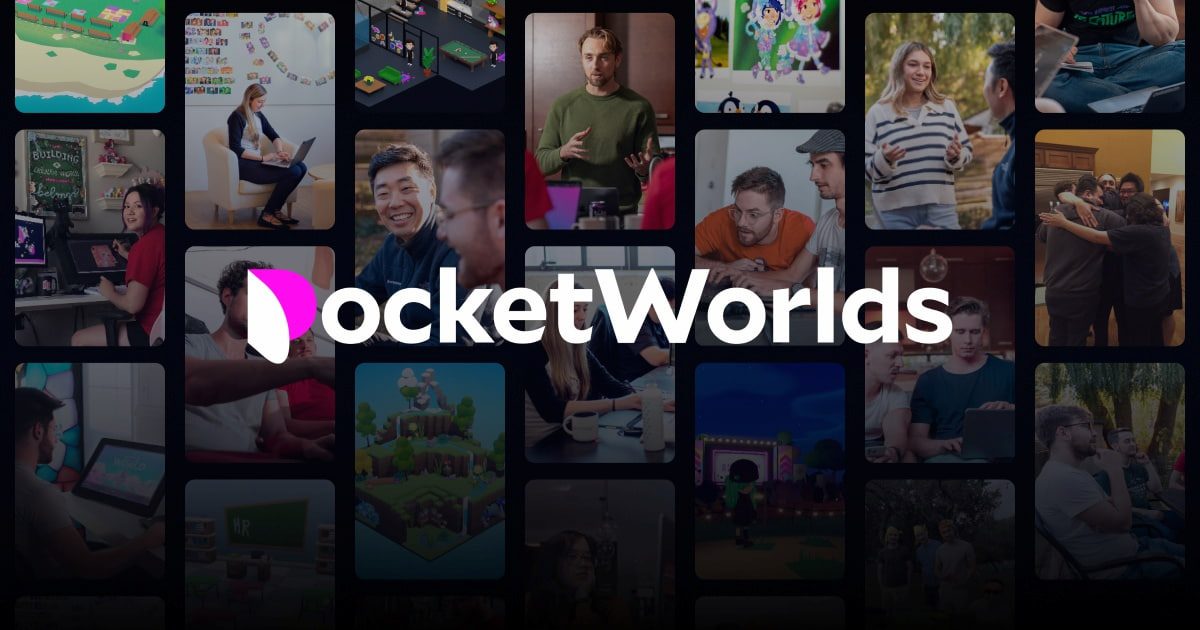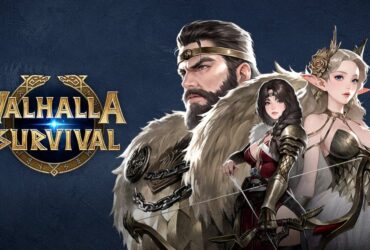



- GamingonPhone sat with Pocket Worlds’ co-founder and CEO Anton Bernstein for an Interview.
- Anton shared his journey from childhood to becoming a professional, delving into the incentives for Highrise creators, the platform’s future, and more.
Ever since its inception, Highrise from Pocket Worlds has been a creative and safe space to chat, play, and build your unique digital identity. With over 50 million players, you can explore virtual rooms, participate in weekly events, and connect with friends globally. With numerous initiatives from Highrise to support creators, we at GamingonPhone had the opportunity to interview Anton Bernstein, the co-founder and CEO of Pocket Worlds. The discussion explored his journey from childhood to becoming a professional, the creator-earn program in Highrise, the future of the platform, and other exciting insights, which we will share in this article.
Please note that this interview has been edited for clarity.
1. Hello Anton, please introduce yourself to our readers.
I’m Anton Bernstein. I’m a co-founder of Pocket Worlds. I started the company 11 years ago out of San Francisco. I was born in Russia, moved to the US when I was five years old with my family, grew up in New Jersey, went to college in Philadelphia, worked in venture capital in New York and San Francisco, started a company in Australia called luxuryscapes.com, which is one of the biggest travel companies in Australia, and we had a French satellite. I lived in Paris for three years. We sold the French business, I moved to San Francisco, and that’s when I started Pocket Worlds with my co-founder, Jimmy.


I grew up gaming. I love games. The core insight for launching the company was the most social experiences that both Jimmy and I had online were games growing up, and even to this day. So we wanted to explore what was at the intersection there. How do you make social games? How do you connect with people through gaming? And so we started Pocket Worlds. We had never built games before, so this was our first time building in the game space. We spent about five years bootstrapped, testing a few different MMOs on mobile.
The core focus was always mobile. We launched Highrise in 2016 as a basic virtual world where people could come in, build an avatar, connect, and talk to each other. We then iterated rapidly on Highrise, releasing a feature a week or a feature every two weeks over two years to learn and discover what the world wanted. That’s when it started to take off.
In 2018, we entered Y Combinator and graduated that year. We raised some money from that and continued to build. Highrise raised more money in 2020. We’ve never spent any of the money we raised, about ten million, because we’ve been profitable for years. Today, we have around 60 million registered users on Highrise. We also acquired a business called Ever Skies, which is more of a social network with avatars than a gaming platform.
Over time, as we built the app, we discovered that as we gave our community tools to build the world they wanted to see, they continually impressed us. So, we kept building more tools. In March of this year, we launched Highrise Studio. Highrise Studio is a big tool that lets users build games and experiences using the studio and deploy them with one click into Highrise.


You can get paid, charge for things, and earn money if subscribed users spend time in your world. People generally build games for our audience, which is different from platforms like Roblox or Epic. Our audience is much more into open play, tends to be more female, and is focused on connection, belonging, socializing, and creative self-expression through avatars and creation.
2. Since you mentioned Epic and Roblox, I am curious about how is Highrise different from Roblox?
Our audience is very different. While Roblox primarily serves young people who want to play immersive games with strong physics, fast-paced action, and a lot of running around, our audience is older; people between 20 and 30. They’re looking for connection and socializing. While Roblox focuses on real-life friends meeting other real-life friends, Highrise is all about friend discovery, where people meet new people. We offer strong social features and tools to connect users, with a focus on finding belonging and meaning online.
We’re also highly focused on creative self-expression and dress-up. In Roblox, the avatar is important but secondary to gameplay. For us, the avatar is the most important thing, and how you express yourself creatively using it matters most. At the end of the day, the people we serve are those seeking community, belonging, and new friendships. They want to express themselves creatively and play games focused on connection, self-expression, and belonging, rather than just fast-paced, action-oriented gameplay like in Roblox.


(discussing Sims franchise and online connection of Highrise with multiplayer features) I think the Sims is a really interesting product because the way I think about the Sims is it’s a kind of dollhouse play where you are your God, right? So you’re God, and you’re playing with your dollhouse, and you put the characters in there, give them some personality, create the space, and create a soap opera in front of you with your dollhouse. For us, you are the doll. Instead of in The Sims, where you’re playing God with a bunch of dolls, in us, you are the doll, and you’re interacting with essentially other dolls. It’s a different kind of gameplay, fundamentally, but a similar audience.
3. What do you think is the key to Highrise’s success in engaging such a diverse and active user base?
A lot of it for us has been knowing our audience and being able to serve them. This focus on creative self-expression, creating community, and belonging has struck a chord with a fairly large community of people, especially as the world gets more disconnected, through COVID, remote work, and so many people working remotely. People are looking for community and connection, and we specifically focus on catering to that.
4. Can you elaborate more on the Highrise Earn Program and how it benefits creators on your platform?
We have two ways that creators can earn on Highrise. Well, there are more than two, but let’s talk about a few of them. One of them is if you build experiences or games inside Highrise using Highrise Studio and deploy them onto Highrise. There are two ways you can earn money there.
One is if people who subscribe to Highrise Plus, which is our subscription service, spend time in your world, then you get their subscription revenue. If they spend 50% of their time in your world, you get 50% of their subscription revenue. We just pass that through to you. Secondly, you can charge for payments inside your world. You charge in gold, which is our in-game currency, and then you can convert that gold into cash using our Creator Exchange.
For experiences, we also have options for items. For example, if you want to make clothing, we have Highrise Ideas and Highrise Concepts. Highrise Ideas lets you put up an idea for a piece of clothing, and other people can pre-order it, kind of like Kickstarter. If enough people pre-order it, it gets tipped, our art team makes it, and you get paid a commission. Highrise Concepts are contests that we run, and if you win the contest, you get paid commission on the items that we produce and sell.
5. What kind of creators are thriving on Highrise and what are the success stories of this making through the platform?
In terms of experience, a few creators are thriving on Highrise. They tend to build social games like one called Back Rooms, where people hunt each other in a kind of monster game. Another one is Society Lounge, which is just a hangout space where you can add music to the radio, people can play it, and they have different contests running inside and ways for people to connect. One of our bigger experiences is Bingo, where people come in and play bingo with each other. It’s social and easy gameplay.
Another experience that’s been doing well recently is Idle Apiary. It’s an idle game where you raise bees and act as a beekeeper. The gameplay is very simple. I think the common thread in all these games is that the gameplay is simple and allows for easy multiplayer interaction. In terms of clothing and content around clothing, we have a few third-party creators. One example is Doodle Kitchen, which has done really well, making around $300,000 already. They create items and sell them in Highrise.
6. How do you ensure equitable opportunities for creators of varying skill levels and how the
discoverability work?


We have discoverability algorithms in our app. We have sections that show all the new stuff that comes out. We surface new experiences as well as new ideas for clothing randomly as people browse. We try to inject it throughout the app. At the end of the day, if something is engaging, it sorts to the top. We also intersperse random content as it gets released, and if it does well, it starts to rise to the top as well.
7. Could you discuss the challenges and opportunities in maintaining a safe and inclusive environment for the global user base, particularly since you mentioned you have a primarily female audience?
One is we are self-selective in that you must be over 13 to use Highrise. Anyone who does not end up getting suspended or banned. Two is we take trust and safety very seriously. We have a large Trust and Safety and support team with over 30 people. Plus, we use machine learning technology for monitoring all chats and voice, surfacing issues.
People can report anybody else, any message, or any profile. Our Trust and Safety team reviews them. We also use machine learning for any images that get posted to detect inappropriate content. The technology has gotten pretty good at detecting things automatically, and we have a big team on top of that to screen for any trust and safety violations.
8. What steps is Pocket World taking to encourage more creators to join and thrive in Highrise?
A lot of our creators come from the community. They become Highrise users first and then start building creations. That being said, we do have programs. We have a leaderboard where we give rewards based on how people perform, including monetary rewards and item rewards. There’s a leaderboard for engagement and another for top earnings.
We run game jams almost monthly, allowing people to build games and experiences and release them through our game jam system. Participants get rewards for winning. We also have a bunch of tutorials on YouTube, and we’re releasing more over time. Our documentation is pretty thorough, and we’re improving it every day.
Finally, many of our users use AI to build their experiences. While we don’t control that, we see them using tools like ChatGPT and Claude. They feed in our documentation, and the AI helps them script their code or build whatever they want.
9. With the ongoing expansion of Highrise, what are your plans for the next three to five years?
Our goal is to continue focusing on our audience and users: people looking for community, connection, and creative self-expression. We’re dedicated to building out our platform and making it the best it can be for them.
Our aim is to be the best product for people seeking community and self-expression.
We’re working on better tooling in Studio to create better experiences, enabling our community further, and running more sessions to teach people how to use Studio effectively. We’re also continuing to grow our team here in Austin, Texas, to support this effort. We aim to be the best product for people seeking community and self-expression. That’s our goal right now.
10. How do you see Pocket Worlds contributing to the broader Metaverse and driving significant economic trends in the future?
I think the creator economy for games doesn’t effectively serve our segment. If you think about Roblox, it’s fast-twitch, younger, super physics-based with pretty intense gaming. If you look at Epic with Fortnite, it’s a first-person shooter and also pretty intense.
There aren’t many creator economies catering to our audience, people looking for belonging, community, and creative self-expression. That’s the way we contribute to the broader ecosystem. We serve an underserved audience, and we’re going to continue building the best products for them that we can.
11. What motivates you to keep innovating in this space, and what has been the most rewarding part of building Highrise?
What motivates me to keep innovating? I think a lot of it goes back to the fact that I do think something that’s game-like is the most connective and social experience you can have online. I think there are a lot of people out there who benefit from that, myself included.


It’s motivating and inspiring to hear the stories of our users. People have found husbands and wives on Highrise, and people have found their best friends. When I talk to people, I do two to three user interviews a week, and very frequently, they share how Highrise has positively changed their lives. That’s inspiring and motivating for me.
12. As a CEO, what do you see as the biggest challenges for the game? What are the key challenges in general, and how are you planning to address them or already addressing them?
At a high level, I think AI is both an existential threat and an existential opportunity in lots of different ways. In terms of finding community and belonging, there’s character AI where you can talk to a bot. I don’t think that replaces a person, but it’s still someone to talk to, and that’s kind of interesting.
A lot is happening in generative AI with art. It’s not being accepted by the broader gaming art ecosystem, but at the same time, it’s kind of hard to fight. It’s happening, and it’s growing. I think that is both a threat and an opportunity. AI is also interesting when it comes to connecting the world. Through localization and translation, someone in China can talk to someone in America, even voice-to-voice with real-time translation, which I think is fascinating.
(on the team size) We have about 110 people or so all over the world, but there are about a dozen people here in Austin, and we’re growing the Austin office.
13. What advice would you give to aspiring entrepreneurs looking to build platforms in the Creator Economy?
I think the advice to any entrepreneur is that a combination of persistence and flexibility is key. I’ve seen lots of people quit because the precise idea that they wanted to make wasn’t working, and so they kind of quit, or they just didn’t have the perseverance to fight through and make it work. I would say for us, it was a pretty long journey, and so a lot of it has been being persistent, continuing to build, but also being flexible and malleable so that if we saw an opportunity that the market was presenting to us, then we were able to navigate in that direction.
The advice to any entrepreneur is that a combination of persistence and flexibility is key.
That’s kind of the broader journey. When it comes to the creator marketplace in general, the toughest thing about the market is that it’s a two-sided market. You have creators on one end and consumers on the other, and I’ve seen it be very difficult to start with creators because it’s rare that creators even want to build on your platform unless you already have an audience. So being thoughtful about that, ask “How are you going to build an audience so that creators are even interested?” That it has to be the other way around.
Catch up on other Interviews from GamingonPhone:
For more Mobile Gaming news and updates, join our WhatsApp Group, Telegram Group, or Discord server. Also, follow us on Instagram, Twitter and Google News for quick updates.
Source link












Leave a Reply